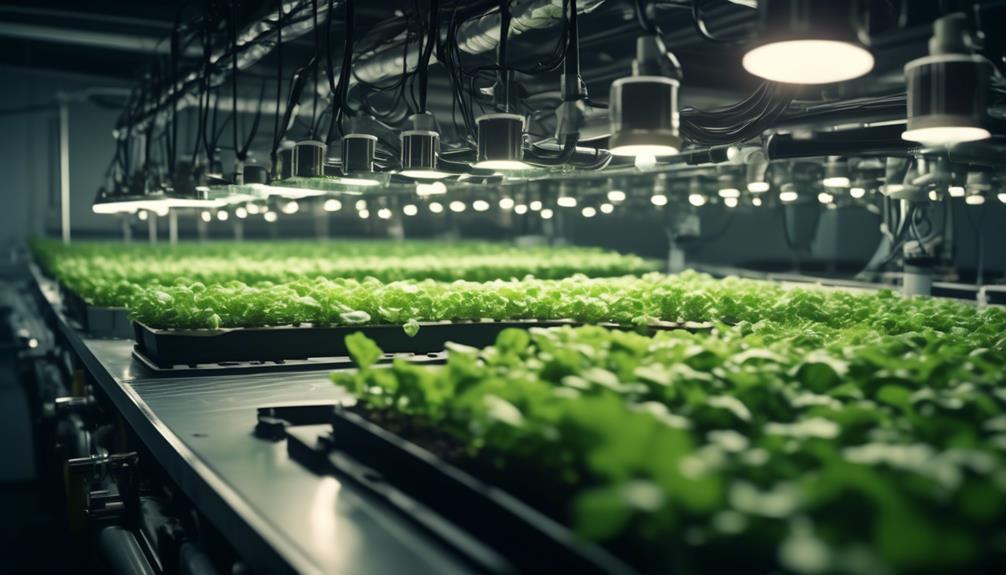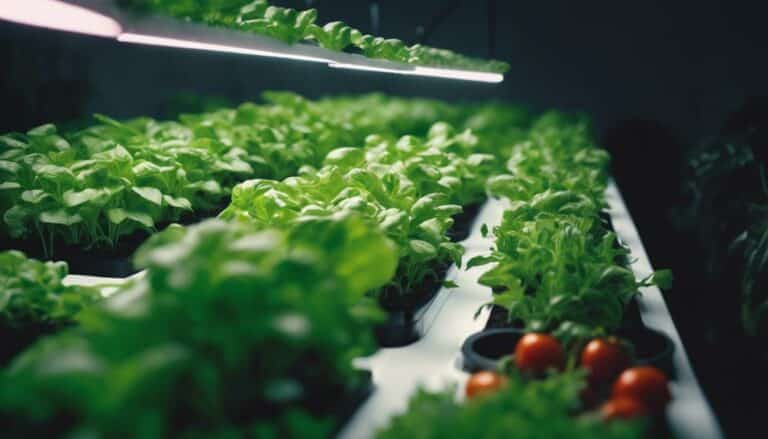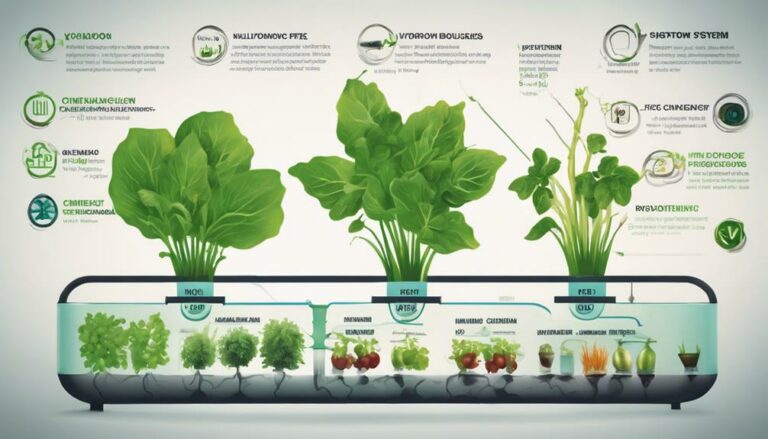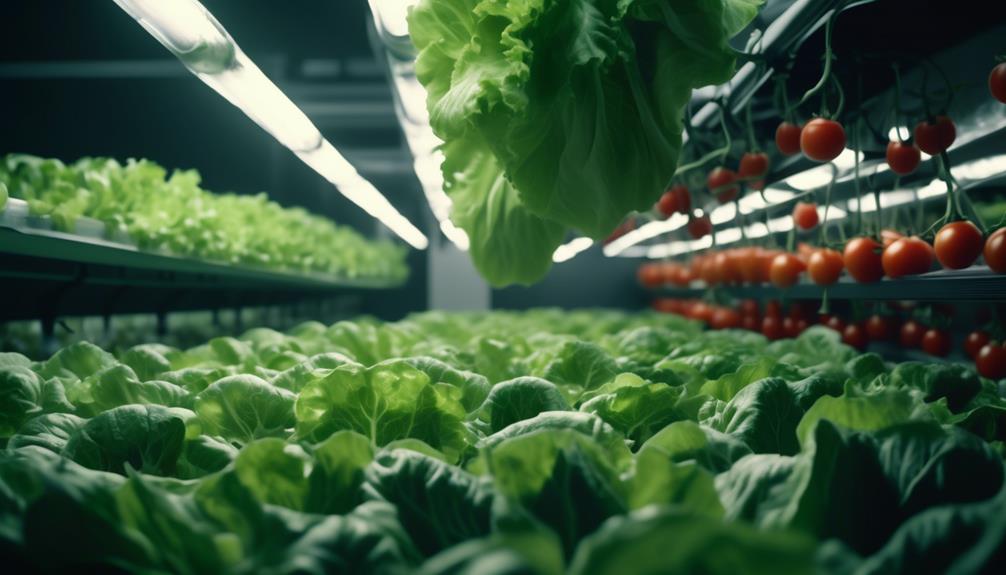Table of Contents
Automating nutrient control in hydroponic systems can significantly improve the efficiency and consistency of plant growth. By carefully monitoring and adjusting nutrient levels, growers can optimize plant health and yield.
In this era of technological advancement, automating this process is not only feasible but also highly beneficial. Implementing a system to automate nutrient control may seem daunting at first, but with the right guidance, it can be achieved with ease.
These six easy steps offer a clear roadmap to successfully automate nutrient control in hydroponic systems, providing a cost-effective and reliable solution for maintaining ideal nutrient levels for plant growth.
Key Takeaways
- Germination is a crucial stage in hydroponic cultivation, and lettuce is a recommended choice for beginners.
- Agricultural rockwool or growing sponges can be used as mediums for germinating seeds.
- Sensors can be used to monitor and control temperature, humidity, and light in hydroponic systems.
- Essential components for automating nutrient control include a water pump motor, pH sensors, and power adapters.
Germinating Seeds
Germinating seeds is a critical stage in hydroponic cultivation. The chosen vegetable seeds are sown and nurtured under specific conditions to encourage the initial stages of growth. In hydroponic systems, the germination process is vital for the subsequent growth of plants. When automating nutrient control in hydroponic systems, it is essential to consider the germination phase to ensure a successful crop.
Lettuce, due to its rapid growth, is an ideal choice for beginners venturing into hydroponic cultivation. To facilitate faster germination, frequent watering is necessary, and maintaining the seeds in a covered box can create the optimal conditions. Additionally, alternative options such as agricultural rockwool or growing sponges can be used as mediums for germination.
Automating the germination process can be achieved by incorporating sensors to monitor and control the environmental factors such as temperature, humidity, and light. This automated approach ensures that the seeds receive the precise conditions required for successful germination, setting the stage for healthy plant growth in the hydroponic system.
Selecting Required Sensors and Components
During the initial phase of hydroponic cultivation, it is imperative to carefully select the necessary sensors and components to automate nutrient control, ensuring an optimal environment for the germination and subsequent growth of plants.
Essential components for an automated hydroponic system include:
- A 12-volt water pump motor
- A 12-volt power adapter
- An adjustable voltage module providing 5-volt power for the microcontroller
- A Wi-Fi-based microcontroller for the system
In addition, it is crucial to select sensors for monitoring nutrient levels and pH levels. A pH sensor is essential for accurately measuring the pH levels of the nutrient solution, allowing for precise adjustments to maintain the ideal pH for plant growth. Furthermore, a water level sensor is required to measure the water capacity, ensuring that the nutrient solution is maintained at the appropriate levels.
These sensors, along with a monitoring system and nutrient dosing capabilities, form the foundation of an effective automated nutrient control system for hydroponic cultivation. By carefully selecting the required sensors and components, growers can ensure that their hydroponic system is equipped to provide the necessary support for healthy plant growth.
Designing and Soldering the PCB
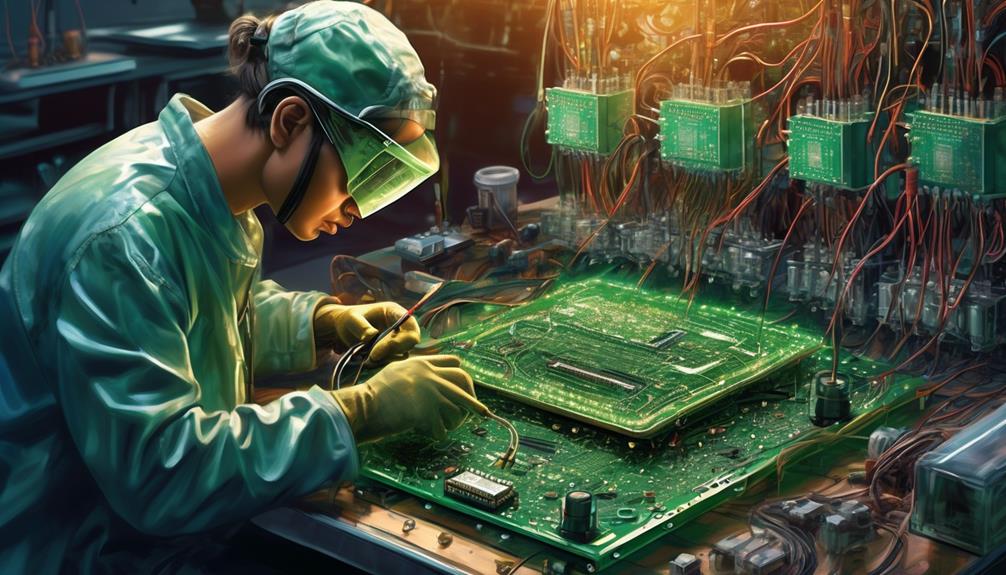
Designing and soldering the PCB involves understanding the necessary components, utilizing design software such as Altium Designer, ordering the printed circuit board, and then soldering the components onto the PCB for integration into the hydroponic system. The table below outlines the essential components required for the PCB and their functions.
| Component | Function |
|---|---|
| Water Pump Motor | Circulates water and nutrient solutions |
| pH Sensor | Monitors the pH levels of the water |
| EC (Electrical Conductivity) Sensor | Measures the nutrient concentration in the water |
| Temperature Sensor | Tracks the water temperature for plant health |
| Microcontroller | Controls the system and processes sensor data |
After understanding the components, the next step is to design the PCB using software like Altium Designer. Once the design is complete, the printed circuit board can be ordered from a reputable service provider like PCBWay. Then, the components are soldered onto the PCB according to the design specifications. This PCB will serve as the central control unit for automating nutrient control in the hydroponic system, ensuring optimal conditions for plant growth.
Testing Circuit Power and Pump
Upon completing the design and soldering of the PCB for nutrient control in the hydroponic system, the next essential step is to proceed with testing the power circuit and the functionality of the water pump, ensuring seamless integration and operation.
Firstly, ensure the 12-volt power adapter is compatible with the water pump motor. Test the power circuit to verify the voltage output using a multimeter. Confirm that the voltage module is providing the required 5 volts for the microcontroller.
After these checks, run a test to check the pump’s functionality and water flow when connected to the power circuit. It’s also important to use a power monitor to measure the power consumption of the circuit and pump for efficiency evaluation.
This process ensures that the automated nutrient control system operates as intended, allowing for the precise monitoring and control of essential nutrients, pH balance, and temperature within the hydroponic system. By thoroughly testing the power circuit and pump, potential issues can be identified and rectified, ensuring optimal nutrient absorption and a fully automated hydroponics system.
Checking PH Meter and Liquid Level Sensor
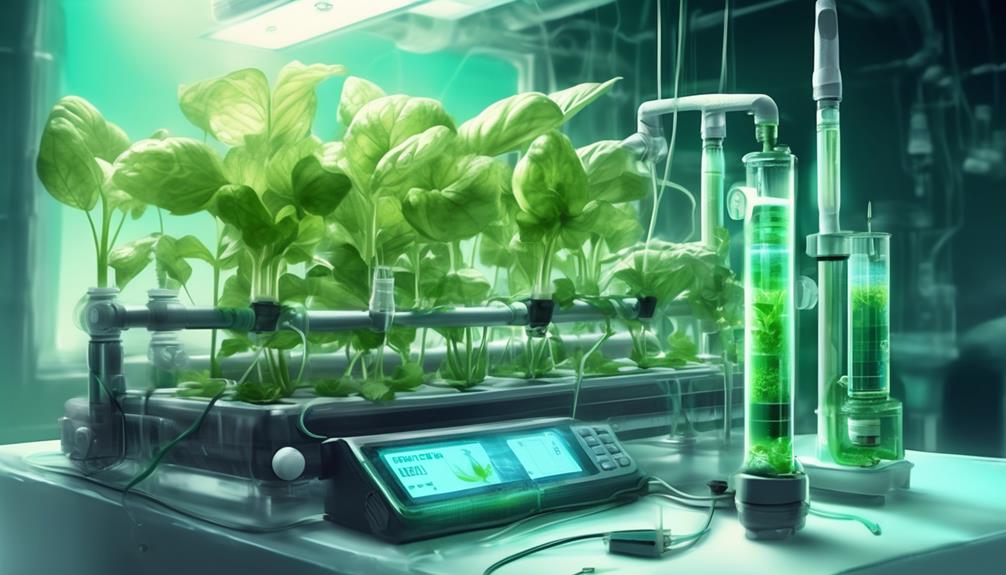
When it comes to nutrient control in hydroponic systems, checking the PH meter and liquid level sensor is crucial. This involves calibrating the PH meter to maintain accuracy, monitoring the liquid level sensor for proper functionality, and conducting regular maintenance to prevent performance issues.
Ensuring these components are in optimal condition is essential for maintaining the overall health and productivity of the hydroponic system.
Ph Meter Calibration
To ensure accurate nutrient control and optimal plant health in hydroponic systems, it is critical to regularly calibrate the pH meter and liquid level sensor to maintain precision in monitoring and adjusting pH levels and water levels. Calibrating the pH meter involves using a calibration solution of known pH to adjust the meter’s reading. Similarly, the liquid level sensor should be checked and calibrated to ensure accurate water level measurements. Both the pH meter and liquid level sensor need to be calibrated regularly to maintain precision in nutrient control, which is crucial for ensuring the health and growth of plants in a hydroponic system. Below is a table summarizing the benefits of automating nutrient control and the monitoring and adjusting of pH and EC levels in hydroponic systems:
| Benefits of Automating | Monitoring and Adjusting |
|---|---|
| Saves time | Ensures optimal nutrient levels |
| Consistent precision | Maintains plant health |
Liquid Level Monitoring
Using a liquid level sensor and a pH meter connected to the microcontroller, precise monitoring of nutrient solution acidity and water levels is essential for maintaining optimal growing conditions in hydroponic systems. The pH meter allows monitoring of the acidity or alkalinity of the nutrient solution, while the liquid level sensor ensures constant monitoring of the water level.
It’s crucial to calibrate these sensors regularly for accurate readings. By connecting them to the microcontroller, data collection becomes automated, enabling real-time monitoring. Implementing alerts or notifications based on pH and liquid level data helps in maintaining optimal conditions.
This, in conjunction with other automated processes like LED lights, temperature and humidity control using devices like Raspberry Pi, contributes to maintaining plant health in a hydroponic setup with a nutrient-rich water supply.
Sensor Maintenance
Regular maintenance of the pH meter and liquid level sensor is crucial for ensuring accurate and reliable monitoring of nutrient solution acidity and water levels in hydroponic systems.
To maintain optimal nutrient levels for plant growth, it is essential to regularly calibrate the pH meter and clean its electrodes with a soft brush and distilled water to remove any residue.
Additionally, checking the liquid level sensor for debris or blockages is important to ensure accurate measurement. It is also necessary to verify that the sensor is securely attached and properly aligned to effectively monitor water levels.
Moreover, replacing the pH meter electrodes and liquid level sensor when signs of wear or degradation appear is crucial for precise monitoring.
How Can I Use Automated Nutrient Control for Hydroponic Crops as a Beginner?
As a beginner, the best way to use automated nutrient control for hydroponic crops is to invest in a reliable system that can monitor and adjust nutrient levels based on the needs of the plants. This will help ensure that your best hydroponic crops beginners thrive and produce a healthy yield.
Assembling and Monitoring Automated Nutrient Control
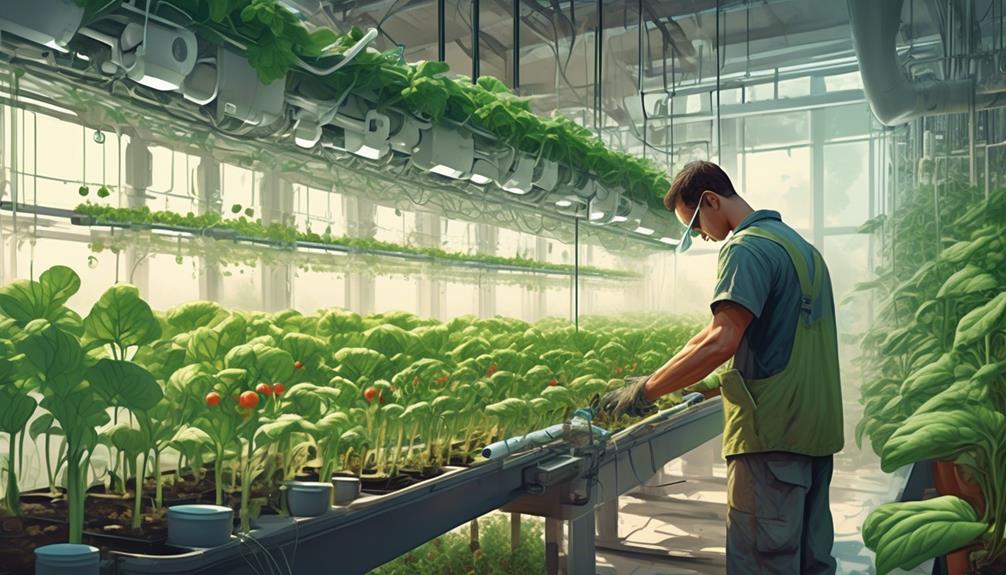
Assembling and monitoring automated nutrient control in hydroponic systems requires careful selection and setup of essential components, such as the water pump motor and pH sensors, along with the utilization of Altium Designer for creating a custom printed circuit board (PCB). These components are crucial for automating nutrient control and maintaining optimal conditions for plant health and growth. Additionally, the ability to adjust the pH and monitor light intensity according to specific plant species’ requirements is essential for achieving the best results. To provide a clear understanding, the table below outlines the necessary components and their functions in automating nutrient control in hydroponic systems.
| Component | Function | Importance |
|---|---|---|
| Water Pump Motor | Facilitates nutrient solution circulation | Essential for delivering nutrients to the roots |
| pH Sensors | Measure and regulate the pH levels of the solution | Crucial for maintaining optimal pH levels |
| Power Adapters | Provide electrical power to the system | Ensures continuous operation of the components |
Frequently Asked Questions
How Do You Make an Automated Hydroponic System?
To create an automated hydroponic system, incorporate automated watering, nutrient dosing, pH control, sensor integration, remote monitoring, and mobile app for data analysis. This integration enables precise plant care, reduces manual labor, and optimizes resource utilization.
How Do You Monitor Nutrients in Hydroponics?
To monitor nutrients in hydroponics, sensor technology enables real-time monitoring of nutrient levels in the solution. Data analysis allows early detection of nutrient deficiencies, facilitating automated dosing and adjustment. This remote access and automation benefits efficient nutrient control.
Can Hydroponics Be Automated?
Hydroponics can be automated to enhance productivity, efficiency, and control in nutrient management. This technology addresses challenges of labor costs and space, while fostering sustainability. Remote monitoring, data analysis, and precision agriculture contribute to the benefits of automation.
What Is the Easiest Hydroponic System to Maintain?
The wick system is the easiest hydroponic system to maintain, ideal for beginners due to its simple design and minimal upkeep. It offers hassle-free and user-friendly options, making it an effortless solution for those seeking easy care setups.
Conclusion
In conclusion, automating nutrient control in hydroponic systems is a crucial step towards efficient plant growth. It is as essential as a compass to a sailor, ensuring that the plants receive the precise nutrients required for their development.
By following the outlined steps, one can easily set up and monitor an automated system that will optimize plant growth and yield in a hydroponic setup.

